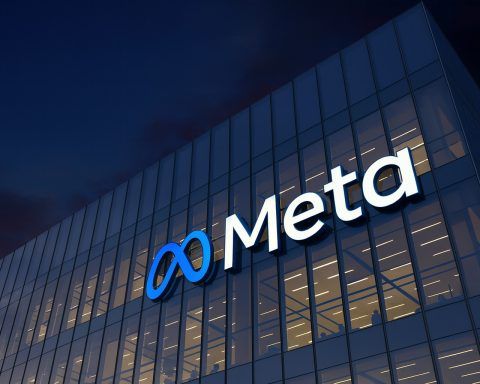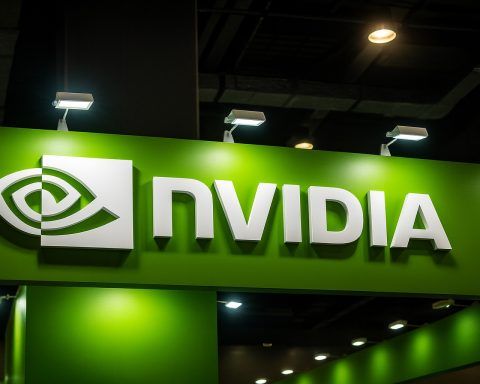- Wild Stock Swing: Luminar (NASDAQ: LAZR) rallied over +30% in late October on rumors that founder Austin Russell would buy the company, briefly topping about $2.22 per share. However, on Oct. 31 the stock collapsed roughly 42–45%, trading down to ~$1.11–$1.21 amid dire financial news [1] [2]. By Nov. 1, LAZR was around $1.16 (off 45% on the day) [3].
- Debt and Liquidity Crunch: The company disclosed it has roughly $429 M of debt versus only ~$74 M cash (Sept. 30) [4], and warned it may run out of cash in Q1 2026, triggering “going concern” doubts [5]. Luminar entered forbearance agreements after missing an Oct. 15 interest payment, and is exploring strategic alternatives (asset sales, recapitalization or a sale of all/part of the business) to address its cash burn [6].
- Operational Cuts: On Oct. 31 Luminar announced a 25% workforce reduction (mostly completed by year-end) and that CFO Thomas Fennimore will resign (effective Nov. 13) [7]. Management cited these cost cuts as necessary amid the crisis.
- Founder Buyout Bid: Earlier, founder Austin Russell – ousted as CEO in May 2025 – proposed via his new firm (Russell AI Labs) to acquire 100% of Luminar’s shares in a deal to merge it into a larger auto-tech entity “Luminar 2.0” [8] [9]. An SEC filing notes the proposal was made “at the suggestion of certain shareholders” and board members [10]. That non-binding bid helped spark the late-October rally, though no transaction is assured [11].
- Recent Financials: In 2Q 2025 Luminar reported $15.6 M revenue (–5% YoY) and a $30.5 M GAAP net loss [12]. Preliminary Q3 (ended Sept. 30) revenue is expected ~$18–19 M [13] (broadly flat sequentially). The company has cut its 2025 guidance to just $67–74 M in revenue (down from ~$82–90 M prior), reflecting slower auto ramp and the wind-down of a legacy data contract [14]. Amid uncertainty, Luminar has now suspended giving guidance altogether [15].
- Technology & Partnerships: Luminar’s Iris LiDAR is already in production on Volvo’s EX90 EV (the world’s first car to standardize this tech [16]), and the company is developing next-generation “Halo” sensors (smaller, high-volume units slated for 2026) in partnership programs with Mercedes-Benz [17]. In April 2025 Mercedes publicly signed on to co-develop Halo, sending Luminar stock up ~9% on the news [18]. Luminar’s tech is also integrated with NVIDIA’s DRIVE platform and Intel/Mobileye for advanced driver-assist and autonomy [19].
- Analyst Outlook: Street sentiment is mostly cautious. MarketBeat reports 4 analyst ratings (2 Hold, 2 Sell) with a consensus “Reduce” rating [20]. The average 12-month price target is only about $2.72 [21] [22] (implying limited upside from today’s price). Bulls point to Luminar’s “best-in-class” long-range LiDAR and marquee auto customers as underappreciated assets, while bears highlight its tiny revenue base and heavy losses as warning flags [23].
Stock Performance and Recent Price Action
Luminar’s stock has been exceptionally volatile. On Oct. 24, 2025 the shares spiked about 31% (to ~$2.28 intraday) as the market jumped on “buyout buzz” tied to founder Austin Russell’s proposal [24] [25]. That move briefly pushed LAZR above its short-term resistance (~$2.10–$2.25) [26]. However, within days investors were hit with negative news – missed debt payments, a halted production forecast and cash worries – causing the stock to crash. From intraday highs near $2.25 on Oct. 24, LAZR plunged to a one-year low around $1.11 by Oct. 31 [27]. As of Nov. 1 the stock traded roughly in the $1.15–$1.20 range [28], well below prior support. Volume has been enormous (e.g. ~60M shares on Nov. 1 vs. 3-month avg ~123M), reflecting panic selling [29].
For context, the 52-week range is $1.08–$18.60 [30], highlighting how far the stock has fallen from last year’s highs. (For comparison, peers like Innoviz and Velodyne/Ouster have seen their stocks climb on strong auto deals this year.) Technical indicators show LAZR remains in a downtrend: key moving averages are sloping downward and momentum oscillators (RSI, MACD) have swung from overbought to oversold with the sharp swing [31]. Support is currently forming near the crash lows ($1.10–$1.20 [32]) and any rally will face resistance above $2.00. In short, the recent price action is a classic “bear trap” – a false breakout on rumors followed by a steep sell-off when fundamentals re-emerged.
Recent Developments (Late Oct 2025)
The past week has been tumultuous. On Oct. 25 the founder buyout news ignited optimism. But on Oct. 31 Luminar issued a flurry of SEC disclosures that revealed the depth of its troubles [33] [34]. The company disclosed missed interest payments on its $9.0% and $11.5% convertible notes, triggering defaults and forcing forbearance agreements with ~90–95% of its noteholders [35]. It reported preliminary Q3 sales of only $18–19M (vs. $15.6M in Q2) [36] and reiterated it has $429M debt vs $74M cash [37]. Management candidly warned that “substantial doubt exists about the Company’s ability to continue as a going concern” [38].
Alongside the financials, Luminar announced a strategic overhaul. It is cutting about 25% of its workforce (mainly by year-end) to conserve cash [39]. CFO Thomas Fennimore will resign effective Nov. 13 (though, the company stressed, not due to any accounting dispute) [40]. Crucially, Luminar said it is now exploring a range of options – from raising new capital to selling all or part of the business [41]. The board has even received proposals (including from Russell’s firm) to take the company private or merged [42]. In short, Luminar is behaving like a turnaround story in crisis: slashing costs, talking to investors, and possibly seeking a savior.
These October filings also revealed a dispute with Volvo (its largest customer): Volvo plans to make Luminar’s Iris LiDAR optional (instead of standard) on some future models, and has delayed decisions on the new Halo sensor. Luminar has suspended further commitments to Volvo and filed a breach claim [43]. There were also legal pressures: Luminar noted it has received an SEC subpoena in a probe of potential securities law issues [44]. All these issues are credit negatives that help explain the stock drop.
Technology Progress and Partnerships
Despite the crisis, Luminar still touts advanced LiDAR tech and big-name partnerships. Its Iris LiDAR (1550 nm, long-range) was already deployed as standard equipment on the Volvo EX90 EV – the world’s first global production car to do so [45]. The company says Series production for the EX90 has begun, enabling a step-function increase in shipments (6,000 units in Q1 2025 vs ~4,000 Q4 2024) [46]. Luminar estimates the EX90 launch will boost its sales “multiple times” beyond past volumes [47] (Volvo had expected quarterly revenue to reach ~$35M once EX90 ramped).
Crucially, Luminar is working on a next-generation LiDAR, Halo, which is much smaller and cheaper than Iris. Halo is on-track to tape out its custom ASIC and get a high-volume production line running by late 2025 [48]. Early Mercedes-Benz models are slated to use Halo; indeed, in April 2025 Mercedes-Benz (MBGn.DE) signed a deal to develop Luminar’s new Halo sensors [49] [50]. CEO Austin Russell celebrated that “Mercedes is on board” and expects global-scale integration [51]. (Rumors also link Luminar with other OEMs; the company has mentioned Nissan in presentations as a collaborative partner.)
Luminar also integrates its sensors with major autonomy platforms. Its LiDAR is designed to plug into NVIDIA’s DRIVE system and Intel/Mobileye’s software stack [52]. Corporate communications note that allowing those leading platforms to use Luminar’s LIDAR is a strong validation of the tech. Recently, Swiss Re published a study showing Luminar-equipped vehicles could avoid up to 25% more collisions than camera/radar alone, underscoring the safety benefits of its sensors [53].
In summary, Luminar’s technological positioning is solid: it has proven long-range 1550nm LiDAR in production (Volvo EX90) and a next-gen product (Halo) in development. Its partners include Volvo, Mercedes-Benz, NVIDIA and Mobileye [54]. Management believes these alliances will pay off as more advanced driver-assist and highway-autonomy features roll out.
Competition and Industry Context
The LiDAR market is heating up. Luminar’s main competitors include Ouster (NYSE: OUST) – now merged with Velodyne – and Innoviz (NASDAQ: INVZ). In October 2025 Ouster/Velodyne announced over 850 new customers and its stock hit 52-week highs [55]. Innoviz saw a big rally after reporting strong H1’25 growth and new auto deals (e.g. with BMW and VW) [56]. These successes highlight investor enthusiasm for companies that can deliver volume growth and profits.
By contrast, Luminar’s valuation is now very low relative to peers: TS2.tech notes LAZR trades at only ~1.6× forward sales, versus ~12× for Innoviz [57]. That large discount reflects doubts about Luminar’s execution (given its plunging cash and missed targets) despite having arguably “best-in-class” LiDAR performance. In other words, investors are treating Luminar more like a distressed asset than a high-growth play.
Financial and Fundamental Analysis
Luminar’s fundamentals are currently under strain. Revenue growth has been sluggish: Q2’25 revenue of $15.6M was down 5% YoY [58], and the company is only expecting ~$67–74M for full-year 2025 (versus $69M in 2023). Costs are much higher than revenue: in Q2 GAAP gross loss was $12.4M and GAAP net loss $30.5M [59]. Balance sheet-wise, Luminar ended Q2 with $107.6M in cash [60] (plus undrawn credit lines and equity financing capacity), but since then the company has burned through cash for operations and debt interest. With $429M total debt and minimal revenue cover, leverage is extremely high. The financing sources (convertible notes, credit lines, equity programs) look insufficient to cover obligations.
Given these figures, analysts see a poor near-term outlook. The formal guidance cut (to 20–23k sensor units in 2025 [61]) implies a conservative assumption of limited auto ramp. Management’s own words emphasize cost cuts and focusing on profitable markets (e.g. moving into trucks/logistics for near-term sales). CEO Paul Ricci has said that Luminar has taken “decisive steps… to deliver on our customer commitments” and is “streamlining [the] business” to set the stage for “sustainable growth and long-term value” [62]. But with a negative “going concern” outlook now on the table, the immediate task is survival.
On the other hand, if Halo succeeds, long-term fundamentals could improve significantly. Industry models suggest that once mass production hits (circa 2026–2027), revenues could climb steeply (a Simply Wall St. analysis projects ~$235M annual revenue by 2028 under optimistic assumptions). Until then, though, the focus remains on cash management and hitting mini-milestones.
Technical Analysis & Forecast
From a technical standpoint, LAZR’s chart is bearish. TS2 notes that after several months of decline, the late-October surge briefly pushed LAZR above resistance (around $2.10–$2.25) [63]. However, the immediate blow-off ended at the 50-day moving average, and the stock quickly reversed. With the post-crash low ~1.11, observers now mark ~$1.10–$1.20 as a new near-term support zone [64]. If that fails, there is little obvious cushion until paring the 52-week low of $1.08. On the upside, overhead resistance sits at about $2.00–$2.25 (the prior rally peak area) [65].
Momentum indicators swung from strongly overbought (RSI above 70) to deeply oversold (RSI below 30) in a few sessions, underscoring the volatility [66]. In short, the technical picture is mixed: the long-term trend is down, but the stock could bounce in the near term if liquidity improves or positive news emerges. Traders will watch for the upcoming catalysts (notably the Nov 6 forbearance deadline and Nov 13 earnings) and key moving-average crossovers.
Given the price action, short-term charts suggest a bearish bias. Momentum oscillators are near lows, and the 200-day MA (~$3.70) is far overhead. A classic rebound trade would target a retest of the $1.60–$2.00 area; failure of that could signal retest of $1.10. Some market participants have used options: e.g. high IV and leveraged put contracts are popular for quick downside bets, while deep-in-the-money calls could be plays if a rescue deal were announced [67].
Analyst Sentiment and Forecasts
Wall Street analysts are largely skeptical. As of early Nov. 2025, the consensus rating is Reduce/Hold – no buys – reflecting concern over Luminar’s weak cash flow and execution. MarketBeat shows 2 Hold and 2 Sell ratings, no buys [68]. The consensus one-year price target is only about $2–3 per share [69] [70]. Notably, analysts had higher targets earlier in the year; the crash has likely forced a reset. Some independent research (Fintel) still cites an average target ~$2.72 [71], while bulls point to upside if Halo deployment is faster than feared.
Analyst commentary highlights the contrast: on one hand, luminar’s ratio of value (strong technology and partnerships) to market cap looks attractive; on the other hand, its cash burn and dilution risk are real dangers. In fact, the weighted forward P/S ratio (~1.6× [72]) is well below peers, implying that analysts see little fundamental growth baked into the current price. The November 13 earnings/update will be a key data point: any hint of improved sales or financing plans could move the needle.
Risks and Outlook
Luminar embodies a high-risk/high-reward scenario. Major risks include liquidity (debt maturities and cash runway), execution (delays in automotive ramps), and legal/regulatory (SEC probe, the Volvo dispute). There is also execution risk on its new factory and Halo launch. If cash is not secured, the company could face severe dilution or restructuring under creditor control.
On the positive side, the core LiDAR technology is widely regarded as leading in performance. If the buyout or fundraising succeeds, Luminar could emerge leaner and better funded. Some investors believe that at today’s price, much of the downside is already priced in, so a successful deal or rebound in auto sales could trigger a big percentage move. But for now, analysts and investors remain cautious. As one note observed: Luminar’s “minuscule revenue and heavy losses” make it risky in a cash-tight environment [73].
Bottom line: LAZR is volatile and unpredictable. In the short term, the stock will track liquidity developments (forbearance resolution, potential capital raises) and technical updates (Nov. 13 quarterlies). Over the medium term, success hinges on Halo adoption and margin improvement. For long-term bulls, Luminar’s LiDAR platform and auto-industry relationships offer a compelling vision – but only if the company can survive its current crunch.
Sources: Company filings and press releases [74]; real-time market data (Reuters) [75]; tech and financial news (TechCrunch/TechBuzz on founder bid [76] [77]; Reuters on Mercedes deal [78]; TS2.tech analyses [79]; investing.com SEC news [80] [81]; analyst consensus data (MarketBeat, Fintel) [82] [83].
References
1. ts2.tech, 2. www.reuters.com, 3. www.reuters.com, 4. ts2.tech, 5. ts2.tech, 6. ts2.tech, 7. ts2.tech, 8. ts2.tech, 9. www.techbuzz.ai, 10. www.techbuzz.ai, 11. ts2.tech, 12. www.businesswire.com, 13. ts2.tech, 14. ts2.tech, 15. ts2.tech, 16. ts2.tech, 17. ts2.tech, 18. www.reuters.com, 19. ts2.tech, 20. ts2.tech, 21. ts2.tech, 22. fintel.io, 23. ts2.tech, 24. ts2.tech, 25. ts2.tech, 26. ts2.tech, 27. ts2.tech, 28. www.reuters.com, 29. www.reuters.com, 30. www.reuters.com, 31. ts2.tech, 32. ts2.tech, 33. ts2.tech, 34. www.investing.com, 35. www.investing.com, 36. ts2.tech, 37. ts2.tech, 38. ts2.tech, 39. ts2.tech, 40. ts2.tech, 41. ts2.tech, 42. ts2.tech, 43. ts2.tech, 44. www.investing.com, 45. ts2.tech, 46. www.businesswire.com, 47. optics.org, 48. ts2.tech, 49. www.reuters.com, 50. ts2.tech, 51. www.reuters.com, 52. ts2.tech, 53. optics.org, 54. ts2.tech, 55. ts2.tech, 56. ts2.tech, 57. ts2.tech, 58. www.businesswire.com, 59. www.businesswire.com, 60. www.businesswire.com, 61. www.businesswire.com, 62. www.businesswire.com, 63. ts2.tech, 64. ts2.tech, 65. ts2.tech, 66. ts2.tech, 67. www.ainvest.com, 68. ts2.tech, 69. ts2.tech, 70. fintel.io, 71. fintel.io, 72. ts2.tech, 73. ts2.tech, 74. www.businesswire.com, 75. www.reuters.com, 76. ts2.tech, 77. www.techbuzz.ai, 78. www.reuters.com, 79. ts2.tech, 80. www.investing.com, 81. www.investing.com, 82. ts2.tech, 83. fintel.io






